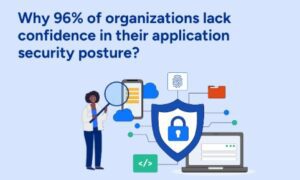Selecting the right programming languages is important for a successful career in cybersecurity. Python, JavaScript, C, C++, Java, SQL, Bash, PowerShell, Ruby, PHP, and Assembly each offer unique advantages for different aspects of security work. Whether you are performing penetration testing, securing web applications, managing systems, or developing exploits, mastering these languages will equip you with the skills needed to tackle the challenges of 2024 and beyond. Invest your time in learning these languages to stay ahead in the ever-evolving field of cybersecurity.
Python:
The Versatile Powerhouse:
Why Learn Python?
Python is a favorite among cybersecurity professionals due to its simplicity and versatility. It is used for scripting, automating tasks, and developing security tools.
Key Features:
Ease of Learning:
Simple syntax and readability.
Libraries and Frameworks:
Extensive libraries like Scapy, Nmap, and PyCrypto.
Versatility:
Suitable for web development, data analysis, and more.
Use Cases:
Penetration Testing:
Automating tasks and developing custom tools.
Scripting:
Writing scripts to automate repetitive tasks.
Data Analysis:
Analyzing security data and logs.
JavaScript:
The Web Security Specialist:
Why Learn JavaScript?
JavaScript is essential for understanding and mitigating web-based attacks. Knowledge of JavaScript helps in identifying vulnerabilities like XSS (Cross-Site Scripting) and CSRF (Cross-Site Request Forgery).
Key Features:
Ubiquity:
Runs in every web browser.
Dynamic Typing:
Offers flexibility in coding.
Interactivity:
Used for creating interactive web applications.
Use Cases:
Web Security:
Analyzing and mitigating web application vulnerabilities.
Browser Exploits:
Developing and understanding browser-based exploits.
Security Tools:
Creating web-based security tools.
3. C and C++:
The Low-Level Experts:
Why Learn C and C++?
C and C++ provide low-level access to system resources, making them crucial for understanding system vulnerabilities and developing exploits.
Key Features:
Performance:
High performance and efficient memory management.
Low-Level Access:
Direct access to hardware and system resources.
Legacy Code:
Many legacy systems are written in C and C++.
Use Cases:
Exploitation:
Developing exploits for vulnerabilities.
System Programming:
Writing low-level system software.
Reverse Engineering:
Analyzing and understanding malware.
Java:
The Enterprise Security Choice:
Why Learn Java?
Java is widely used in enterprise environments. Understanding Java is essential for securing large-scale applications and performing security assessments.
Key Features:
Platform Independence:
Runs on any device with the Java Virtual Machine (JVM).
Security Features:
Built-in security features like secure class loading and bytecode verification.
Extensive Use:
Common in enterprise applications and Android development.
Use Cases:
Application Security:
Securing enterprise Java applications.
Mobile Security:
Developing and securing Android applications.
Web Security:
Building and securing web applications with Java frameworks.
SQL:
The Database Defender:
Why Learn SQL?
SQL is essential for database management and security. Understanding SQL helps in identifying and mitigating SQL injection attacks, one of the most common web application vulnerabilities.
Key Features:
Data Manipulation:
Powerful language for managing and querying databases.
Integration:
Works with most relational database management systems (RDBMS).
Efficiency:
Efficiently retrieves and manipulates data.
Use Cases:
Database Security:
Securing databases from SQL injection attacks.
Data Analysis:
Analyzing security logs and data stored in databases.
Database Management:
Managing and maintaining secure databases.
Bash:
The Scripting Veteran:
Why Learn Bash?
Bash is widely used for scripting in Unix-based systems. It is essential for automating tasks, managing systems, and performing security assessments.
Key Features
Scripting:
Powerful scripting capabilities for automation.
System Management:
Used for system administration tasks.
Ubiquity:
Available on almost all Unix-based systems.
Use Cases:
Automation:
Automating security tasks and assessments.
System Management:
Managing and securing Unix-based systems.
Penetration Testing:
Writing custom scripts for penetration testing.
PowerShell:
The Windows Scripting Powerhouse:
Why Learn PowerShell?
PowerShell is a powerful scripting language for Windows environments. It is essential for automating tasks, managing systems, and conducting security assessments on Windows.
Key Features
Automation:
Automates complex administrative tasks.
Integration:
Deep integration with Windows operating systems.
Object-Oriented:
Supports object-oriented programming for powerful scripting.
Use Cases:
Automation:
Automating security tasks in Windows environments.
System Management:
Managing and securing Windows systems.
Penetration Testing:
Developing custom scripts for penetration testing on Windows.
Ruby:
The Metasploit Language:
Why Learn Ruby?
Ruby is known for its simplicity and readability. It is the language behind the Metasploit Framework, a popular tool for penetration testing and exploit development.
Key Features:
Ease of Use:
Simple and readable syntax.
Frameworks:
Strong frameworks like Metasploit for security tasks.
Community Support:
Active community and plenty of resources.
Use Cases:
Penetration Testing:
Using and developing modules for Metasploit.
Scripting:
Writing custom scripts for security assessments.
Automation:
Automating security tasks and workflows.
PHP:
The Web Development Workhorse:
Why Learn PHP?
PHP is widely used for server-side web development. Understanding PHP is crucial for identifying and mitigating web application vulnerabilities.
Key Features:
Simplicity:
Easy to learn and use for web development.
Integration:
Integrates well with various databases and web technologies.
Wide Adoption:
Powers a significant portion of the web.
Use Cases:
Web Security:
Securing PHP-based web applications.
Vulnerability Assessment:
Identifying and mitigating web vulnerabilities.
Exploit Development:
Developing exploits for web application vulnerabilities.
Assembly:
The Ultimate Low-Level Language:
Why Learn Assembly?
Assembly language provides the ultimate low-level access to system resources. It is essential for reverse engineering, malware analysis, and exploit development.
Key Features
Performance:
Direct access to hardware and system resources.
Control:
Fine-grained control over system operations.
Low-Level Understanding:
Deep understanding of how software interacts with hardware.
Use Cases:
Reverse Engineering:
Analyzing and understanding malware.
Exploit Development:
Developing exploits for vulnerabilities.
System Programming:
Writing low-level system software.
Conclusion:
Cybersecurity is a dynamic field, requiring constant adaptation to new threats and technologies. As a security professional or ethical hacker, mastering the right programming languages is essential. These languages enable you to understand vulnerabilities, develop secure systems, and perform effective penetration testing. This article explores the top programming languages to learn in 2024 for cybersecurity.



































